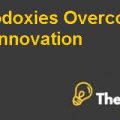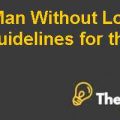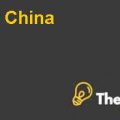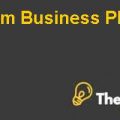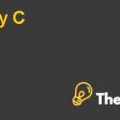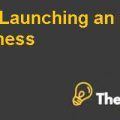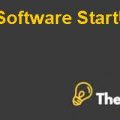MCPHEE DISTILLERS Case Solution
First of all, producing limited whiskey has both the positive and negative aspects. As evaporation is the nature of the whisky therefore it is necessary that it is sold before evaporating and in this case, there is twelve years life of the whisky. Producing limited whisky will cut off the fear of no sales. Contrary to this, the demand of whisky is high and by producing limited amount, McPhee will not be able to exploit the demand with higher revenue.
Premium quality of whisky will distinguish it from the other competitors and could be helpful for the company to cater the elite class. Additionally, it could earn a brand name.
Catering with the niche client means that the company is focused to a particular group of population. Initially, it is good to start by targeting lower audience because it will be easy to determine the nature and choice of customers. But on the other hand, it also limits the potential of the business.
Lastly, selling the whisky through barrels instead of bottles has its own pros and cons. The cost of bottling will surely be cutoff through this strategy but it will oblige the sale of whisky to the other businesses. Also, due to the limited supply of oaks, the price of barrels is increasing and the idea of sales through barrels does not seem feasible unless the company is ready to bear the increasing cost of the barrels.
FINANCIAL ANALYSIS
If we consider the production cost of the whisky for the years 2015 and 2016, the costs are different for the three selling schedules i.e. FIFO, LIFO, and Average. From Exhibit 1 to Exhibit 3, we can see that the cost of sales in the year 2015 is $1,687,500 for FIFO, $1,825,000 in LIFO, and $1,756,944 in case of average. While in the year 2016, the cost of sales from Exhibit 4 to Exhibit 6, are $1,950,000 in case of FIFO, $1,925,000 in case of LIFO, and $1,973,611 in case of average. The FIFO method was good for the company in 2015 while the LIFO method was good in the year 2016. However, it is difficult to say that which method should be followed because we have only two years data.
From the Exhibit 7, we can see that net profit of the company in case of FIFO in the year 2015 was $310,000 and $(77,500) in the year 2016. In Exhibit 8, we can see that the net income of the company in case of FIFO was $172,500 in the year 2015 and $(52,500) in the year 2016. Exhibit 9 depicts that the net income of the company was $240,556 in 2015 and $(101,111) in the year 2016. The net income is more negative in the year 2016 in case of Average cost therefore, for the sale of inventory; the company should not consider the option of Average. Either it should go for FIFO and LIFO depending on the number of barrels.
The net income of the company is positive in the first year while it is negative in the second year in all cases i.e. in FIFI, LIFO and Average. It seems that the idea of barrel selling is no more feasible. Elsa Kingsley has taken a wrong decision of barrel selling because it has also limited her direct consumers.
RECOMMENDATIONS
Addressing the owner’s considerations while considering the above discussions and findings, following recommendations can be made:
- Since the decision for the barrels is not profitable, therefore company should not skip the last step of bottling and by bearing the cost of bottling too; it can increase its net income. For Example, From the Exhibit 10, it can be seen that if the company opt for the selling of bottle at $60 per bottle, then it can save $500 per barrel. However, this $500 will include bottling cost but still company will be saving some amount per barrel.
- Adopting the above strategy, the company can expand its captured audience resulting in increasing profitability.
CONCLUSION
Based on the above discussion and analysis, we can say that the company can increase its profitability by following the recommended strategies that is to replace barrel sale with the bottle sales and to increase their range of targeted audience. Elsa Kinsley doesn’t need to shut down her business but she needs to modify her current strategy as recommended above.
EXHIBITS





